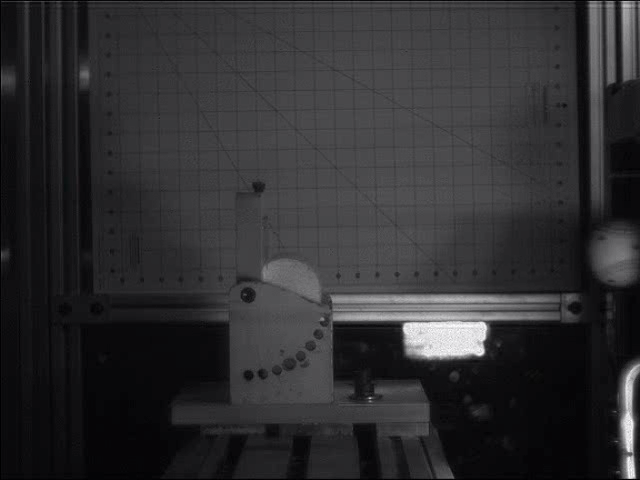The Vision Of Cristiano Ronaldo

Last year, the Spanish newspaper Marca revealed the nicknames that Real Madrid players have given each other inside the Santiago Bernabéu locker room. While some names poked fun at a player’s appearance (“Nemo” for Mesut Özil’s bulging eyes), superstar Cristiano Ronaldo was simply known as “la máquina”, Spanish for “the machine.” With his humanoid robot physique and his superior speed and quickness, Ronaldo seems to be programmed for goal scoring. Indeed, sponsor Castrol has developed a self-proclaimed documentary, “Ronaldo – Tested To The Limit”, to attempt to explain the Portuguese player’s body strength, mental ability, technique and skill. The most interesting of the four segments, mental ability, helps us realize that without the command center of the brain, the machine-like body parts are useless.
While physical attributes such as strength, speed, agility and power are necessary for athletic greatness, sport skill begins with evaluating the playing environment, taking in cues and making decisions through sensory input and perception. Vision supplies 80-90% of the information athletes use to plan their motor skill movement. Surrounded by sports scientists and testing equipment at a Madrid soundstage, Ronaldo was asked to perform two experiments that showcase his visual perception skills of gaze control and spatial awareness. First, his challenge was to keep the ball away from an opponent for at least 5 seconds in a 1v1 drill. While his opponent was a former Division One player, Andy Ansah, there was no doubt Ronaldo would succeed in keeping possession. The insight came from both players wearing eye tracker equipment that can later show the gaze or saccadic movements of their eyes.
Elite athletes have more sophisticated patterns of cues that they watch for and focus on to beat their opponents versus novice players that gaze at many focal points. Professor Joan Vickers at the University of Calgary is best known for her pioneering work in athlete eye tracking and working with coaches and players to develop strategies and logic of what they should be looking at during competition. For example, hockey or soccer goalies should focus on the shooter’s hips or body angle rather than the puck or ball.
Through the eye tracking video, Ronaldo’s opponent, Ansah, looked mostly at the ball and the feet but his eyes darted in a less defined pattern. Ronaldo, on the other hand, clearly had a strategy of watching Ansah’s hips and space around Ansah that he could exploit. His command of the ball at his feet allowed him to only occasionally check its position. This superior spatial awareness allows great players to watch their opponent and react to the slightest hints of their next movement.
Athlete eye tracking and working with coaches and players to develop strategies and logic of what they should be looking at during competition. For example, hockey or soccer goalies should focus on the shooter’s hips or body angle rather than the puck or ball.
Another aspect of visual perception in many sports is to track a moving object. An outfielder racing to catch a fly ball, a tennis player returning a 100 mph serve, or a soccer striker taking a one-time shot of a well-crossed ball all require a sophisticated, yet mostly subconscious, skill to intercept the object’s path and act on it. To show that most of this task is calculated in the brain rather than simply with the eyes, Ronaldo was asked to do something he is paid very well to do, finish off a crossed ball into the goal.
However, to make it more interesting, during the ball’s flight to Ronaldo, the lights were turned off inside the arena forcing the player to calculate the final flight trajectory of the ball and make contact with it in the dark. Just as a baseball hitter only gets about ¼ of a second to decide to swing at a 90 mph pitch (and can rarely “see” the ball all the way across the plate), an athlete often relies on his brain to complete the 3D scenario and rapidly predict the path of the flying object. As seen in the video, the first two crosses are “easily” finished off by Ronaldo when he is allowed to see about half the ball’s flight towards him. The real expertise is shown when the room goes dark immediately after Ansah kicks the ball. The only cues available to Ronaldo are angles and movement of Ansah’s hips and legs to predict where the ball will end up. Not only did he meet the ball but added a bit of Portuguese style by using his shoulder to finish the goal.
There has been some debate over the years on how exactly humans track moving objects. Several studies and theories have looked at the movement of baseball outfielders as they follow a fly ball off the bat. The late Seville Chapman, a physicist at Stanford, developed the Optical Acceleration Cancellation (OAC) theory that argues a fielder must keep moving to keep the rising ball at a certain angle to him. If he moves forward too much, the ball will rise too fast and land behind him. If he mistakenly moves backward, the ball’s angular flight will drop below 45 degrees and land in front of him. By keeping a constant angle to the ball through its flight, the fielder will end up where the ball does.
Subconsciously, Ronaldo may be using the OAC theory to start moving towards the ball based on its early trajectory, then computes the rest of the flight in the dark. The advanced skill of predicting the path of the ball instantly after the kick puts Ronaldo into a world class category.



















